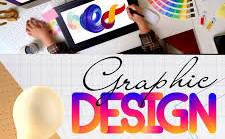The Art of Designing Graphics
Graphic design is a powerful form of visual communication that combines art and technology to convey ideas, messages, and information in a creative and impactful way. From logos and branding to websites and advertisements, design graphics play a crucial role in shaping how we perceive the world around us.
The Elements of Graphic Design
Effective graphic design involves a careful balance of various elements such as colour, typography, imagery, and layout. Each element contributes to the overall aesthetic appeal and functionality of the design.
Colour
Colour plays a significant role in evoking emotions and setting the tone of a design. Different colours can convey different meanings and elicit specific responses from viewers. A thoughtful selection of colours can enhance the visual impact of a graphic design piece.
Typography
Typography refers to the style, size, and arrangement of text within a design. Choosing the right fonts and typography can greatly influence readability and visual hierarchy. It is essential for conveying the intended message effectively.
Imagery
Images and graphics are essential components of graphic design that help communicate ideas visually. Whether it’s photographs, illustrations, or icons, carefully chosen imagery can enhance the overall appeal and storytelling aspect of a design.
Layout
The layout determines how various elements are arranged within a design space. A well-structured layout guides the viewer’s eye through the content in a logical manner while creating visual interest and balance.
The Impact of Graphic Design
Graphic design has a profound impact on our daily lives, influencing our perceptions, decisions, and interactions with the world. Whether it’s through branding that shapes consumer preferences or through visual storytelling that conveys complex information simply, design graphics have the power to engage, inform, and inspire.
The Future of Graphic Design
In an increasingly digital world, graphic designers are constantly adapting to new technologies and trends to stay relevant. The future of graphic design holds exciting possibilities as designers explore innovative ways to connect with audiences across various platforms and mediums.
Understanding Graphic Design: Key Concepts, Tools, and Techniques
- What is graphic design and why is it important?
- What are the key elements of graphic design?
- How can colour theory be applied in graphic design?
- What software tools are commonly used in graphic design?
- How does typography impact the effectiveness of a design?
What is graphic design and why is it important?
Graphic design is the art of visually communicating ideas, messages, and information through the skillful arrangement of elements such as colour, typography, imagery, and layout. It plays a crucial role in various industries, from marketing and advertising to web design and publishing. Graphic design is important because it helps businesses and individuals effectively communicate their brand identity, values, and offerings to their target audience. By creating visually appealing and engaging designs, graphic designers can capture attention, evoke emotions, convey complex concepts in a simple manner, and ultimately drive desired actions. In essence, graphic design enhances communication and enables meaningful connections between creators and viewers in a visually-driven world.
What are the key elements of graphic design?
When exploring the realm of design graphics, a frequently asked question revolves around the key elements that form the foundation of graphic design. These essential components include colour, typography, imagery, and layout. Colour selection is crucial in setting the mood and evoking emotions within a design. Typography plays a significant role in conveying messages effectively through text arrangement and font choices. Imagery enhances visual communication by providing context and engaging viewers with compelling visuals. The layout determines how these elements are structured within a design space to guide the viewer’s eye and create a cohesive visual hierarchy. Understanding and utilising these key elements effectively are fundamental to creating impactful and visually appealing graphic designs.
How can colour theory be applied in graphic design?
Colour theory plays a crucial role in graphic design by guiding designers on how to effectively use colour to convey messages and evoke emotions. Understanding colour harmonies, contrasts, and psychology enables designers to create visually appealing compositions that resonate with the intended audience. By applying colour theory principles, designers can establish visual hierarchy, improve readability, and enhance brand recognition. Whether it’s selecting a colour palette for a logo design or choosing background colours for a website layout, incorporating colour theory in graphic design ensures that every hue serves a purpose and contributes to the overall impact of the design piece.
What software tools are commonly used in graphic design?
In the realm of graphic design, a frequently asked question revolves around the software tools commonly used by designers to bring their creative visions to life. Some of the most popular software tools in graphic design include Adobe Photoshop, known for its robust photo editing capabilities and versatile design features. Adobe Illustrator is another go-to tool for creating vector graphics and illustrations with precision and scalability. Designers often rely on Adobe InDesign for layout design, typography, and publishing projects. Additionally, tools like Sketch and Figma are favoured for user interface (UI) and user experience (UX) design, offering collaborative features and prototyping functionalities. These software tools empower designers to unleash their creativity and craft visually stunning designs across various digital and print mediums.
How does typography impact the effectiveness of a design?
Typography plays a crucial role in determining the effectiveness of a design by influencing how information is perceived and understood. The choice of fonts, sizes, spacing, and alignment can significantly impact the readability, visual hierarchy, and overall aesthetic appeal of a design. Well-executed typography enhances the clarity of the message, guides the viewer’s eye through the content, and conveys the intended tone or emotion. By carefully selecting and arranging typography elements, designers can create designs that not only look visually appealing but also effectively communicate their message to the audience.
